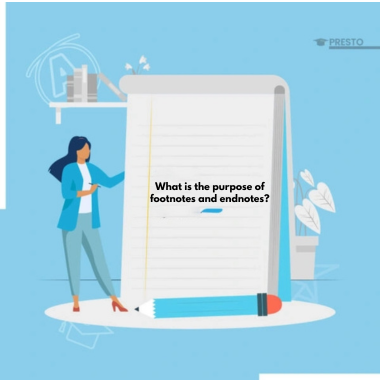Last week, I sat next to my friend Leo as he typed his story on his laptop. As I read, I saw tiny numbers like ¹ and ² next to some of his sentences. I asked, “Leo, what are these for?” He smiled and said they were footnotes and endnotes. He told me they help explain ideas and show where he found his facts without crowding his main words. That surprised me! Since then, I have learned a lot about the purpose of footnotes and endnotes, and I want to share it with you.
What Are Footnotes?
Footnotes are short notes placed at the bottom of the same page where they appear in the text. When a writer wants to give more details or name a source, they put a little number after a word or sentence. Then, at the bottom of that page, you can read the matching note.
- Example: If you write “Honeybees make honey¹,” you add a footnote like:
- ¹ Source: “All About Honeybees,” Nature Kids Magazine.
Footnotes are great when you want readers to see extra info right away. You do not have to flip to the back of the book or scroll a lot.
What Are Endnotes?
Endnotes work like footnotes, but they all go together at the very end of a chapter, book, or paper. Instead of seeing the note on the same page, you see a list of all notes at the back.
- Example: In your story, you might write, “Ancient Egyptians built pyramids².” Then, at the end of the chapter under “Endnotes,” you find:
- ² Source: “Pyramids of Giza,” History Explorer.
Endnotes keep each page neat and simple. However, you must turn to the end to read the extra details. For more information, read the article Is Chegg Safe to Use?
Purpose of footnotes: Why Writers Use Them?
The purpose of footnotes and endnotes can be grouped into three big ideas:
1. Giving Credit
Writers borrow ideas, facts, or quotes from books and websites. Footnotes and endnotes show where they got these ideas. This way, the writer is honest and does not copy without saying so.
2. Adding Extra Facts
Sometimes, a writer wants to share a quick fact or tell a small story without stopping the flow. Footnotes and endnotes are perfect for that. They let the main text stay smooth while giving curious readers a little more to learn.
3. Helping Readers Learn More
At the end of a paper or book, readers can look at all the sources in one place. Then, they can find the books or articles themselves to read more deeply on the topic.
How Do They Help Readers?
Footnotes and endnotes make reading easier and more fun for these reasons:
- Clarity: If a word is hard or new, a footnote can explain it right away.
- Trust: When readers see sources, they trust the writer more because they know where the facts came from.
- Choice: Some readers like the extra details. Others prefer to skip them. Footnotes and endnotes let each person decide.
Read Also: How to Write a Research Paper
How to Choose Between Footnotes and Endnotes
Deciding which one to use can be simple if you think about your readers:
- Use Footnotes When
- You want readers to see explanations at once.
- Your extra notes are very short.
- You do not mind a busy page with little numbers at the bottom.
- Use Endnotes When
- You have many notes and want clean pages.
- Your notes are longer or more detailed.
- You prefer one big list at the end instead of bits on every page.
Simple Rules for Adding Footnotes and Endnotes
Here are easy steps to follow so your notes look neat and are helpful:
- Number in Order
- Start with 1 and go up by one for each note.
- If you start a new chapter, you can start again at 1.
- Match Numbers
- Put the small number right after the word or sentence it explains.
- Use the same number with the note down below or at the end.
- Keep Notes Short
- Write only what you need. Long notes can be tiring to read.
- Stay Consistent
- Use the same font size and style for all notes.
- Make sure all your notes look the same.
- Follow Style Guides
- If your teacher or a book says to use a certain format, follow it.
- Different subjects (like history or science) may have their own rules.
For detailed insight, read the article What is the 123 method of studying?
Fun Tips and Tricks
- Use Footnotes for Jokes: Sometimes, writers hide little jokes or side stories in footnotes. It’s like a secret surprise for curious readers!
- Endnotes for Projects: In big reports or school projects, endnotes keep your pages clean. Then, a reader can jump straight to “Endnotes” at the back.
- Digital Notes: In online articles, footnotes can link you to other web pages. Just click the little number!
And don’t forget: if you want help writing like a professional, even with tricky things like citations, you can always get writing support through PrestoExperts. It’s like having a friendly teacher available anytime.
I never knew those tiny numbers had such a big job. Now, I understand the purpose of footnotes and endnotes: they give credit, add cool facts, and help readers learn more. Next time you see a superscript number in a book or article, you will know it is there to guide you. Try using footnotes or endnotes in your writing. You might find that they make your work stronger and more interesting to read!


